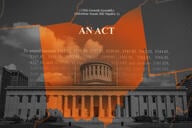You have /5 articles left.
Sign up for a free account or log in.
Adjunct faculty members who rely solely on university pay sometimes have to perform financial gymnastics to make ends meet, especially if they don't have income during the summer months.
But lecturers at Saint Mary’s College of California recently cleared a hurdle that will help them -- and that they hope can be applied elsewhere. Those at the bargaining table were able to add a clause to the contract that will change the way the college responds to requests for verification that someone is without employment. That change, adjuncts hope, will let them qualify for unemployment benefits.
The case is particularly noteworthy for not only the precedent it sets, but its location. A 1989 California court ruling in Cervisi v. Unemployment Insurance Appeals Board found that part-time instructors are eligible for unemployment benefits because their positions are reliant on enrollment, funding and other factors, preventing them from having "reasonable assurance" of employment.
But as lecturers at Saint Mary’s found out, unclear language from the college could still result in their being denied benefits.
Thomas Cooney, a lecturer at Saint Mary’s who used to lead the college’s M.F.A. program in creative writing, said he applied for benefits in the summer of 2013 after the unexpected death of his brother. Cooney wanted to help his nieces, who had previously lost their mother, and said the process made him feel “humbled.”
But his application was denied. When Cooney asked the state why, California officials said members of Saint Mary’s human resources department said Cooney was under contract for the fall and wasn’t eligible for the funds. And of course that's the case for many adjuncts -- they may be hired for the fall but have no work or income over the summer.
In the fall of 2014, the contingent faculty at Saint Mary's unionized, joining the Service Employees International Union. Cooney brought up the issue again to members of the union and heard stories similar to his own -- faculty applying for benefits but being denied because of a statement made by Saint Mary’s.
“I sort of threw a surprise punch to the college. I said, ‘I want to table everything. I don’t want to go any further until we discuss unemployment benefits,’” Cooney said. “The staff from Saint Mary’s said, ‘We don’t know what you’re talking about, we’re not fighting it.’”
But when Cooney read the language in the contract aloud to all at the table, he said he watched “jaws drop.”
“You further understand and agree that you have no right to claim and will not claim unemployment compensation for any inactive period during the term of this appointment, including, but not limited to, periods of time during which no classes, courses or workshops are being taught or offered,” the clause read.
“They actually agreed to take that language out of the contract and they would issue a directive not to fight any unemployment filings by employees who genuinely are deserving of it,” Cooney said.
Cooney was not alone in his struggle. Elise Miller, also a lecturer at Saint Mary’s, said she too applied for unemployment benefits and was initially rejected. But after explaining to state officials that she did not have reasonable expectation for enrollment because a summer course she was supposed to teach was canceled due to low enrollment, the benefit checks started rolling in.
But she said she has dealt with other issues with the college. Miller said she often wouldn’t hear whether a course she was assigned to teach was running or not until the very last minute and her contracts wouldn’t arrive until October, even though she had been lecturing for weeks.
“It was so angering to me, this is so inconsiderate, and by then I had become a part of the SEIU organizing committee and my consciousness was raised a little bit,” Miller said.
The new agreement resulted in a side letter, and more information on applying for unemployment is available on the college’s human resources website.
“While the college can’t comment on a personnel matter, no matter when it occurred, in general, the California Employment Development Department [EDD], not the college, makes the determination of unemployment benefits,” Michael McAlpin, a spokesman for Saint Mary’s, said in an email.
“The side letter reflects the college’s continuing effort to partner and dialogue with the contingent faculty union in good faith,” he continued. “Saint Mary’s recognizes and appreciates that the academic experience at the college is enhanced by the contributions of its contingent faculty of adjuncts and lecturers.”
A National Fight
Saint Mary’s is just the launching pad for a larger union battle. Representatives from major unions, including the Service Employees International Union and the American Federation of Teachers, are part of a movement led by the New Faculty Majority, calling for a change in the language used by the Department of Labor to determine whether or not an applicant is eligible for unemployment benefits.
Maria Maisto, the president of NFM, said the existing language in a guiding letter used by the Department of Labor to determine reasonable assurance is based on K-12 education requirements, not higher education. Typically, K-12 teachers have reasonable assurance of employment in the fall, and the summer is viewed as more of a typical unpaid vacation.
Maisto and other representatives from the unions sat down with under secretaries of labor last year to discuss the change but have yet to hear a response. A Department of Labor spokesman said the department "is aware of concerns about the eligibility of higher education faculty and is currently studying the issue.”
Alyssa Picard, the director of AFT Higher Education, said her organization is actively involved in pursuing the national strategy.
“In view of the insecurity that characterizes these faculty members’ working lives, California and Washington already recognize that they don't have ‘reasonable assurance’ of future employment,” Picard said in an email. “We think it’s time for the Department of Labor to make clear that this is true in all 50 states.”
But while national changes are stalled, the organizations are pursuing a state-by-state agenda.
Maisto said the NFM has offered workshops for faculty in Ohio, encouraging them to apply for unemployment and helping them to understand the process. But she said that the negotiations at Saint Mary’s offer a warning to those hoping to pursue the right to unemployment benefits.
“I think it’s a good lesson, especially to people who are already in unions, that some laws are more favorable in some cases than in others, and that the organizing and collective actions need to be an ongoing concept to strengthen the union and make contracts better,” Maisto said.
Brianne Bolin, an adjunct instructor at Columbia College in Chicago and the managing director of PrecariCorps, a fund that assists adjuncts with financial issues, said it’s typically uncommon for adjuncts to receive unemployment because of how reasonable assurance is determined nationally.
She said adjuncts having issues with their institutions is pretty common -- she and other adjuncts at Columbia College once worked three and a half years without a contract because they were unable to come to an agreement with the college.
“We don’t have reasonable assurance, many are likely to have classes cut and our schedules never look the same as when we’re assigned courses and when the semester actually starts,” Bolin said.
Celesté Peterson, the lead organizer and a contract negotiator at SEIU local 1021 in California, who helped to negotiate the contingent faculty’s new contract at Saint Mary’s, said the addition of the clause allowing applicable faculty to apply for unemployment benefits as an “important win.”
She said that while in California unemployment benefits typically aren’t an issue because of the legal precedent, her chapter would continue to ask for the clause to be added in each upcoming contract they negotiate.
Peterson added that colleges may be reluctant to allow faculty to apply for unemployment because if it’s granted by the state, the college has to foot the bill.
“It’s definitely something we should be talking about and trying to figure out on a national scale, for sure,” she said.




